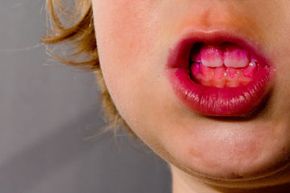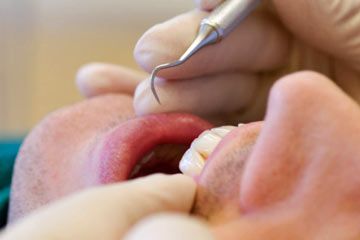If only real-life dental care was as obvious as those animated television ads for products like cavity-fighting mouthwash -- where small armies of cleansing agents blast away layers of brightly colored plaque, leaving your teeth protected and your breath minty fresh.
In reality, plaque is often a hidden danger. You can brush and floss your teeth until your gums bleed, but plaque -- the colorless (but easily stained) film of food particles and bacteria that is constantly forming on your pearly whites -- can still remain. Plaque is tenacious, clinging to your teeth's enamel like Velcro.
Advertisement
Formed by the germs and bacteria that feed on the starches and sugars found in food particles, plaque is insidious, forming constantly. Initially, this film is soft and can be removed safely with proper brushing and flossing techniques. But if you don't remove plaque daily, it can begin to harden within 48 hours.
After a week, the result is tartar, or dental calculus, which is more like cement than sludge. The presence of tartar can be a precursor to cavities, since the acids produced by tartar's bacteria erode tooth enamel by essentially leaching important minerals.
Therefore, putting a stop to this corrosive chain is critical to maintaining good dental hygiene. Daily brushing and flossing is an important first step. But even conscientious brushers and flossers can miss a few spots, and where there's an opening, plaque will develop. The solution is plaque-disclosing tablets.
Typically made of vegetable dye, the tablets are ingenious and very easy to use. After brushing and flossing, rinse your mouth with fresh water. Place a plaque-disclosing tablet on your tongue, let your mouth's natural saliva dissolve it, and then swish the mixture around for a half-minute or so, making sure it covers all your teeth.
After you spit out the mixture (don't be alarmed by the bright colors), take a look in the mirror. The bright red or blue stain you see covering your teeth is actually the plaque that your first brush or floss missed. Your gums may also be stained, but that's normal. Now that you can see the plaque, you can brush and floss a second time, more thoroughly.
Plague-disclosing tablets can benefit anyone, but they're especially useful for people who are prone to plaque build-up due to extenuating circumstances, such as receding gums or dental apparatus, including braces or bridges.
The tablets are readily available (most neighborhood drug stores, and even big box stores like Wal-Mart carry them), relatively inexpensive (at Amazon.com, a packet of 30 tablets costs roughly $12, and a box of 250 costs $40) and very effective in uncovering the colorless film. Just the cost-savings between the tablets and the average cleaning bill from your friendly family dentist will add a sparkle to your smile.
What are some tips for using plaque-disclosing tablets?
Advertisement


